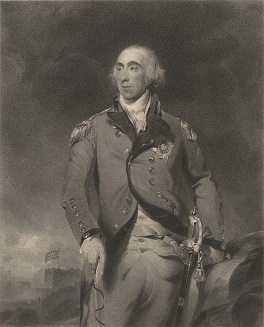Paoli Massacre
After the Battle of the Clouds, the bulk of the American army moved to Reading Furnace to replenish their ammunition. General Washington left behind Brigadier General Anthony Wayne and a regiment of troops to either harass the rear of the main body of British troops.
The British were camped at Tredyffrin, preparing to cross the Schuylkill River and attack Philadelphia, but Lord Howe got word that Wayne was lurking in ambush. Howe changed his plans. He would instead try to ambush Wayne at his camp in Paoli.
Just after midnight on September 21, the British led by Lord Grey launched a devastating strike into Wayne's unprepared American camp. Grey had ordered his men to remove the flints from their rifles before the attack began. Bayonets, — a weapon Americans considered barbaric — would be the weapon of choice.
53 Americans were killed and over 100 wounded in Grey's lightning raid. The use of the bayonet coupled with the notion that the British stabbed or burned the Americans who tried to surrender, made martyrs of those maimed and killed at Paoli. For the rest of the war, the British lived in fear that Wayne's troops would try to avenge the affair that came to be know as the Paoli Massacre.




